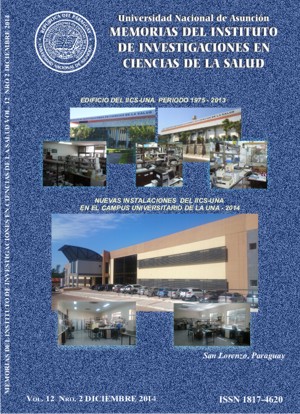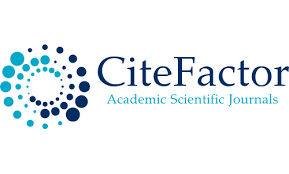Electrogramas auriculares endocárdicos anormales en pacientes de la tercera edad con fibrilación auricular paroxística idiopática
Palabras clave:
tercera edad, fibrilación auricular paroxística idiopática, miocardio auricular; mapeo auricular endocárdico con catéterResumen
Los pacientes de la tercera edad están particularmente predispuestos a desarrollar episodios de fibrilación auricular paroxística (FAP), pudiendo ser los cambios que experimenta el miocardio auricular un factor contribuyente a la aparición de este fenómeno con el correr de los años. Por ende, diseñamos este trabajo con la idea de investigar los cambios que se producen en los electrogramas auriculares endocárdicos registrados por medio de un mapeo intraauricular con catéter en pacientes con FAP idiopática en la tercera edad. Realizamos un mapeo endocárdico con catéter de la aurícula derecha en ritmo sinusal en 72 pacientes con FAP idiopática para evaluar la influencia de la edad avanzada en los electrogramas auriculares endocárdicos. Los electrogramas bipolares fueron registrados de 12 sitios de la aurícula derecha, y un electrograma endocárdico auricular anormal fue definido como aquel que posee una duración ≥100 ms, y/o 8 o más deflexiones fragmentadas. Se registraron 864 electrogramas auriculares endocárdicos que fueron analizados cuantitativamente. El número de electrogramas auriculares anormales, así como la máxima duración y el mayor número de deflexiones fragmentadas de los electrogramas auriculares endocárdicos en los pacientes con FAP idiopática tuvo una correlación significativamente positiva con la edad. Se observó que la edad avanzada altera las propiedades electrofisiológicas del miocardio auricular haciéndolo más susceptible a desarrollar episodios de FAP. Estos cambios electrofisiológicos son más extensos conforme aumenta la edad. Existe un aumento progresivo en la extensión de la anormalidad electrofisiológica del miocardio auricular en pacientes de la tercera edad con fibrilación auricular paroxística idiopática.
Descargas
Citas
Davies MJ, Pomerance A. Pathology of atrial fibrillation in man. Br Heart J. 1972;34:520-25.
Lev M. Aging changes in the human sinoatrial node. J Geront. 1954; 9(1):1-9.
Davies MJ, Pomerance A. Quantitative study of aging changes in the human sinoatrial node and internodal tracts. Br Heart J. 1972; 34:150-52.
Hudson REB. The human pacemaker and its pathology. Br Heart J. 1960; 22(2):153-67.
Hordof AJ, Edie R, Malm JR, Hoffman BF, Rosen MR. Electrophysiologic properties and response to pharmacologic agents of fibers from diseased human atria. Circulation. 1976; 54(5): 774-9.
Hordof AJ, Spotnitz A, Mary-Rabine L, Edie RN, Rosen MR. The cellular electrophysiologic effects of digitalis on human atrial fibers. Circulation. 1978; 57(2):223-9.
Gelband H, Bush H, Rosen MR, Myerburg RJ, Hoffman BF. Electrophysiologic properties of isolated preparations of human atrial myocardium. Circ Res. 1972; 30(3): 293-300.
Mary-Rabine L, Albert A, Pham TD, Hordof A, Fenoglio JJ Jr, Malm JR, Rosen MR. The relationship of human atrial cellular electrophysiology to clinical function and ultraestructure. Circ Res. 1983; 52(2):188-99.
Centurión OA, Fukatani M, Konoe A, Tanigawa M, Shimizu A, Isomoto S, Kadena M, Hashiba K. Electrophysiological abnormalities of the atrial muscle in patients with sinus node dysfunction without tachyarritmias. Int J Cardiol. 1992; 37:41-50.
Centurión OA, Fukatani M, Konoe A, Tanigawa M, Shimizu A, Isomoto S, Kaibara M, Hashiba K. Different distribution of abnormal endocardial electrograms within the right atrium in patients with sick sinus syndrome. Br Heart J. 1992; 68:596-600.
Tanigawa M, Fukatani M, Konoe A, Isomoto S, Kadena M, Hashiba K. Prolonged and fractionated right atrial electrograms during sinus rhythm in patients with paroxysmal atrial fibrillation and sick sinus syndrome. J Am Coll Cardiol. 1991; 17:403-8.
Spach MS, Dolber PC. The relation between discontinuous propagation in anisotropic cardiac muscle and the "vulnerable period" of reentry. In: Zipes DP, Jalife J, eds. Cardiac Electrophysiology and arrhythmias. Orlando, Florida : Grune and Stratton; 1985. p. 241-52.
Spach MS, Dolber PC. Relating extracellular potentials and their derivatives to anisotropic propagation at microscopic level in human cardiac muscle: Evidence for electrical uncoupling of side-to-side fiber connections with increasing age. Circ Res. 1986; 58:356-71.
Spach MS, Miller WT, Dolber PC, Kootsey JM, Sommer JR, Mosher CE Jr. The functional role of structural complexities in the propagation of depolarization in the atrium of the dog. Cardiac conduction disturbances due to discontinuities of effective axial resistivity. Circ Res. 1982; 50:175-91.
Centurión OA, Fukatani M, Shimizu A, Konoe A, Isomoto S, Tanigawa M, Kaibara M, Yano K. Anterograde and retrograde decremental conduction over left-sided accessory atrioventricular pathways in the Wolff-Parkinson-White syndrome. Am Heart J. 1993; 125:1038-47.
Gallagher JJ, Gilbert M, Svenson RH, Sealy WC, Kasell J, Wallace AG. Wolff-Parkinson-White syndrome: The problem, evaluation, and surgical correction. Circulation. 1975; 51:767-85.
Centurión OA, Isomoto S, Hayano M, Ayano K. Evidence of quadruple anterograde atrioventricular nodal pathways in a patient with atrioventricular node reentry. J Electrocardiol. 1994; 27:71-8.
Josephson ME, Scharf DL, Kastor JA, Kitchen JG. Atrial endocardial activation in man: Electrode catheter technique for endocardial mapping. Am J Cardiol. 1977; 39:972-81.
Amat-y-Leon F, Dhingra RC, Wu D, Denes P, Wyndham C, Rosen KM. Catheter mapping of retrograde atrial activation: observations during ventricular pacing and AV nodal reentrant paroxysmal tachycardia. Br Heart J. 1976; 38:355-62.
Centurión OA, Isomoto S, Konoe A, Shimizu A, Hayano M, Yano K. Electrophysiologic demonstration of anterograde fast and slow pathways within the His bundle in patients with normal intraventricular conduction. Int J Cardiol. 1994; 44:251-60.
Centurión OA, Isomoto S, Fukatani M, Shimizu A, Hirata T, Hano O, et al. Relationship between atrial conduction defects and fractionated atrial endocardial electrograms in patients with sick sinus syndrome. PACE. 1993; 16:2022-33.
Escande D, Loisance D, Planche C, Coraboeuf E. Age-related changes of action potential plateau shape in isolated human atrial fibers. Am J Physiol. 1985; 249:H843-H50.
Isomoto S, Fukatani M, Konoe A, Tanigawa M, Centurión OA, Seto S, et al. The influence of advancing age on the electrophysiologic changes of the atrial muscle induced by programmed atrial stimulation. Jpn Circ J. 1992; 56:776-82.
Spach MS, Dolber PC, Anderson PAW. Multiple regional differences in cellular properties that regulate repolarization and contraction in the right atrium of adult and newborn dogs.
Circ Res. 1989; 65:1594-611.
Erickson EE, Lev M. Aging changes in the human atrioventricular node, bundle, and bundle branches. J Geront. 1952; 7(1):1-12.
Michelucci A, Padeletti L, Fradella GA, Lova RM, Monizzi D, Giomi A, Fantini F. Ageing and atrial electrophysiologic properties in man. Int J Cardiol. 1984; 5(1):75-81.
Dubrow IW, Fisher EA, Denes P. The influence of age on cardiac refractory periods in man. Pediatr Res. 1976; 10:135-9.
Roberts NG, Gillette PC. Electrophysiologic study of the conduction system in normal children. Pediatrics. 1977; 60:858-63.
Spach MS, Dolber PC. Relating extracellular potentials and their derivatives to anisotropic propagation at microscopic level in human cardiac muscle. Circ Res. 1986; 58:356-71.
Centurión OA. Atrial fibrillation complicating congestive heart failure: Electrophysiological aspects and its deleterious effect on cardiac resyncronization therapy. J Atrial Fib 2009;2(1):37-49.
Centurión OA, Shimizu A, Isomoto S, Hano O, Hirata T, Konoe A, Kaibara M, Yano K. Incidence and electrophysiological characteristics of the supernormal atrial conduction in humans. J Electrocardiol 1994; 27:61-9.
Hashiba K, Tanigawa M, Fukatani M, Shimizu A, Konoe A, Kadena M, Mori M. Electrophysiologic properties of atrial muscle in paroxysmal atrial fibrillation. Am J Cardiol. 1989; 64:20-3.
Cosio FG, Palacios J, Vidal JM, Cocina EG, Gómez-Sánchez MA, Tamargo L. Electrophysiologic studies in atrial fibrillation. Slow conduction of premature impulses: a possible manifestation of the background for reentry. Am J Cardiol. 1983; 51(1):122-30.
Centurión OA, Isomoto S, Shimizu A, Konoe A, Hirata T, Kaibara M, Hano O, Yano K. Supernormal atrial conduction and its relation to atrial vulnerability and atrial fibrillation in patients with sick sinus syndrome and paroxysmal atrial fibrillation. Am Heart J. 1994; 128:88-95.
Centurión OA, Konoe A, Isomoto S, Hayano M, Yano K. Possible role of supernormal atrial conduction in the genesis of atrial fibrillation in patients with idiopathic paroxysmal atrial fibrillation. Chest. 1994; 106(3):842-47.
Centurión OA, Shimizu A, Isomoto S, Konoe A. Mechanisms for the genesis of paroxysmal atrial fibrillation in the Wolff-Parkinson-White syndrome: Intrinsic atrial muscle vulnerability vs. electrophysiological properties of the accessory pathway. Europace. 2008; 10(3):294-302.
Centurión OA. Clinical implications of the P wave duration and dispersion: Relationship between atrial conduction defects and abnormally prolonged atrial endocardial electrograms. Int J Cardiol. 2009;134 (1):6-8.
Centurión OA, Isomoto S, Shimizu A. Electrophysiological changes of the atrium in patients with lone paroxysmal trial fibrillation. JAFIB 2010; 3(1):1-9.
Centurión OA, Shimizu A, Isomoto S, Konoe A, Hirata T, Kaibara M, Yano K. Repetitive atrial firing and fragmented atrial activity elicited by extrastimuli in the sick sinus syndrome with and without abnormal atrial electrograms. Am J Med Sci. 1994; 304:247-54.
Hubbard ML, Henriquez CS. A microstructural model of reentry arising from focal breakthrough at sites of source-load mismatch in a central region of slow conduction. Am J Physiol Heart Circ Physiol. 2014; 306(9):H1341-52.
Nakahara S, Kamijima T, Hori Y, Tsukada N, Okano A, Takayanagi K. Substrate modification by adding ablation of localized complex fractionated electrograms after stepwise linear ablation in persistent atrial fibrillation. J Interv Card Electrophysiol. 2014; 39(2):121-9.
Ciaccio EJ, Biviano AB, Garan H. The dominant morphology of fractionated atrial electrograms has greater temporal stability in persistent as compared with paroxysmal atrial fibrillation. Comput Biol Med. 2013; 43(12):2127-35.
Ciaccio EJ, Biviano AB, Garan H. Computational method for high resolution spectral analysis of fractionated atrial electrograms. Comput Biol Med. 2013; 43(10):1573-82.
Ghoraani B, Dalvi R, Gizurarson S, Das M, Ha A, Suszko A, Krishnan S, Chauhan VS. Localized rotational activation in the left atrium during human atrial fibrillation: relationship to complex fractionated atrial electrograms and low-voltage zones. Heart Rhythm. 2013; 10(12): 1830-8.














